
I would like to share something funny which happened to me after finishing the review of this book. After few weeks I was reading this book, I finally finished the review and I generally wait 1-2 days before publishing to be sure I didn’t make big mistakes, or in case I want to add something. While waiting I began another review: Timman’s triumphs.

I was looking at selecting some of Timman’s games for the article, and I watched a new game, my chess mind would be screaming and labeling the game based on McDonald’s book. I saw one of Timman’s sac to open the H file for the rooks and immediately I thought: Chapter 8 getting in first with the rooks! Another of Timman’s games was clearly chapter 1 trapping the king in the centre. I then realized that I learned something from this book, also if I couldn’t measure it, or convey it to another player.
I want to use every book or dvd review I make for training. Yes, we are living an amazing time in chess history, more chess books are published every month, than in any other time in history. Chess books are also quite cheap compared to 1 hour lesson by a GM (generally it costs between 75 and $100). Practically I can buy 3 chess books or more with what would I spend for one hour GM lesson. Hence the smart thing to do is to buy at least 3 chess books every month, and keep the chess training always varied.
How do I use a book like this? I just enjoy it.. read it fast… and jot down the positions which are interesting, or which I don’t understand.
Chapter One is dedicated to trapping the king in the center. I believe this is one of the basic stages of development for every chess player. In order to become a master level player, one must develop the sensibility to give up material for time and consequently to keep the enemy king in the center and win the game.
Let’s begin to train our visualization, without using a board try to see one of the many interesting positions from chapter one. For example after the moves:
1.e4 e5 2.f4 exf4 3.Nf3 Nf6 4.e5 Nh5 5.Qe2 Be7 6.Nc3 Black plays 6…d5? and this last move is a mistake… can you see why?
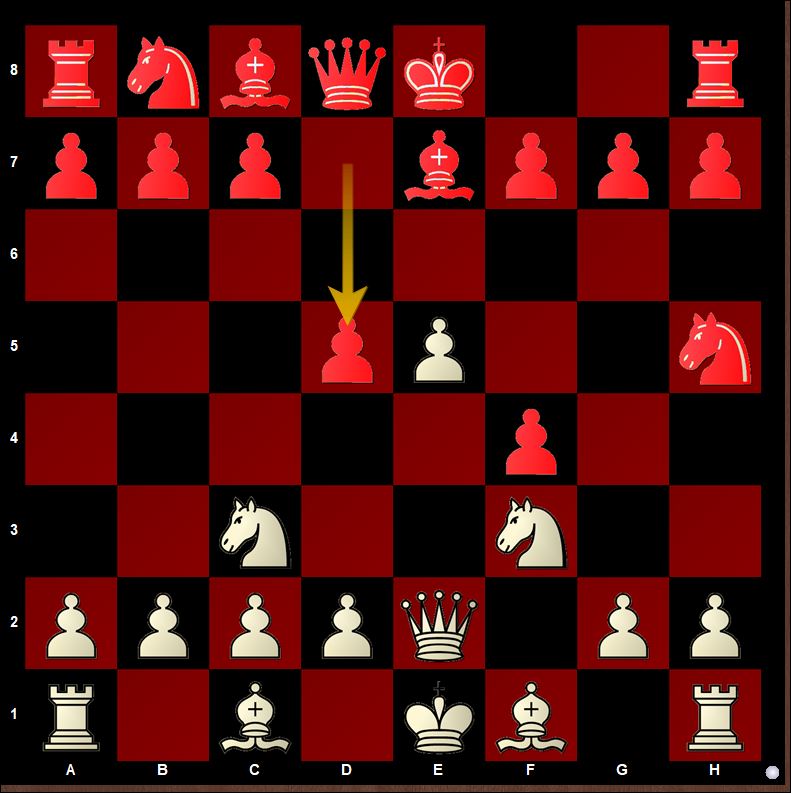
While I’ll quote freely from the book, I’ll not give any solutions. Yes you have to work it out, like in a real tournament game. However, buy the book, and you’ll see all these positions, and relative answers by GM McDonald.
Another belief I have developed is the one relative to the mental chess library we should build within ourselves. For example the following games are an example of what one should actively do. One should also catalogue the games seen with different patterns. Classical games like mentioned by GM Mikhalchishin in one of his latest DVDs are a good example.
As you have surely noticed the attack happened always on the nearly same squares, and in some cases also when coming from different openings the attack was hitting the same spot.
In the above selection of games one in particular raised my eyebrow. The game Reshevsky vs Vaganian. The question which comes to mind is the following: if a GM level player of the caliber of Reshevsky, who has played all the top players in top tournaments for over 50 years, can lose so badly, because he left the king in the center, can someone rated 1700-2000 do really better?
Chapter Two: Gaining momentum with threats against pieces
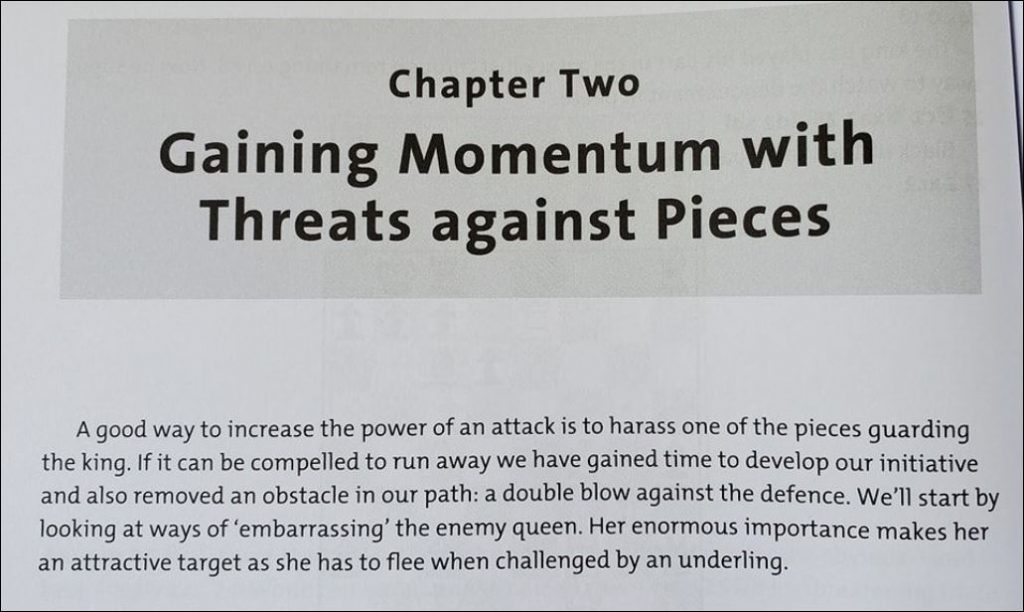
After reading the explanation given in the beginning of the chapter, I’d like to give some of the games used in this chapter, because the reader of this review should analyze the games, then buy the book, and see how well GM McDonald has annotated these games, pausing at the right moments. He placed a diagram and asked some questions, this is why we need this book, because GM McDonald is giving us, through the book, endless coaching hours!
But I’d like to prove it to you: just stop here, watch the questions which often pop up while reading a game, and decide if it’s worth your money. I believe it is, if one is serious about chess improvement.
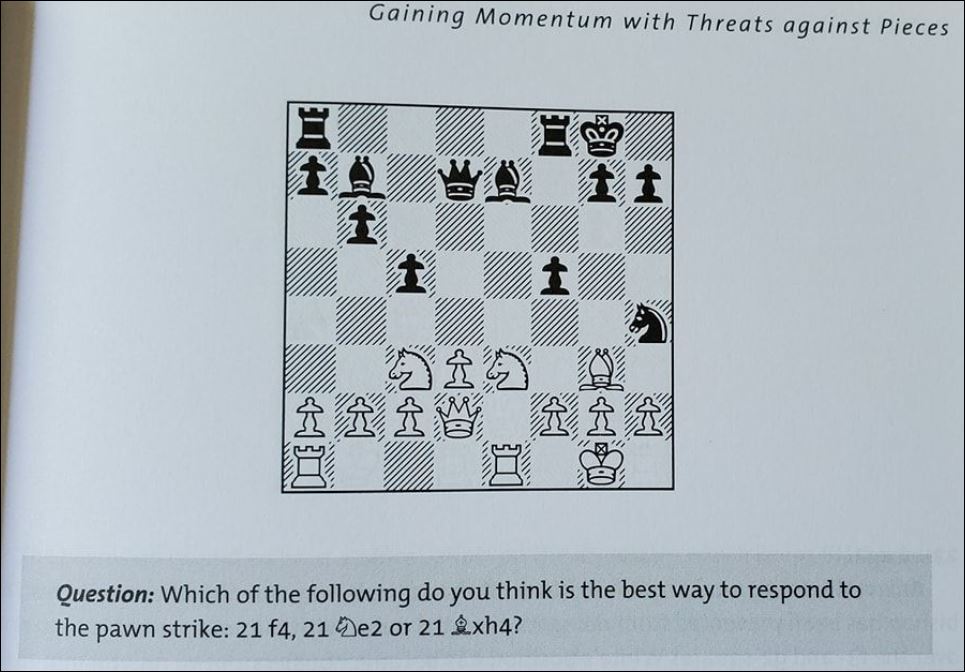


Chapter Three: Exploiting a strong point near the enemy line
Every chapter begins with a small intro, in which the author explain what he will be trying to convey.

Now the strength of this book is not only about the games selected, but the annotations made by GM McDonald, and when he stops at critical moments asking some questions on how to continue.
These are some examples of questions we find on Chapter 3:
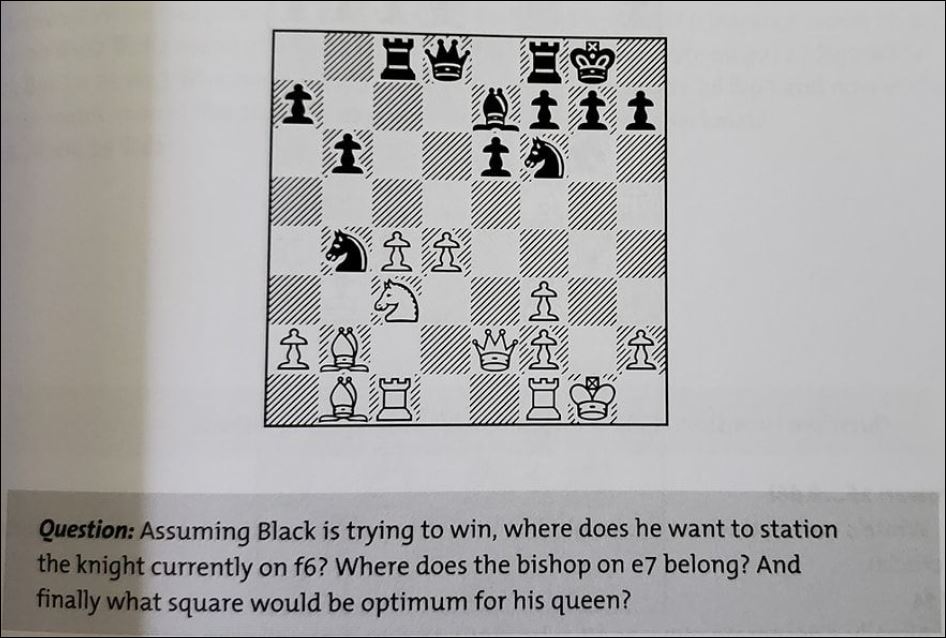

These are the games used in this chapter. Please be aware the author often takes a game, and begins from a position asking questions, he doesn’t care to show all the game, because the goal is not to teach opening theory, but attacking patterns.
Chapter Four: Death on the diagonal

I believe there are immediately 2 games which come to mind after reading this definition, one very famous played by Lasker, the other by Tarrasch but while looking for that game I found many others which had a double bishop sacrifice, and which can illustrate the concept, and even teach us when and why it works:
Notice I also found one game in which the double bishop sac didn’t work, I’m sure there are many more.
Of all these games I found, none was used in this chapter to illustrate the concepts the author wants to teach, showing how good is the author in finding examples never used before.
Chapter Five: For and Against the Indian bishop
This is the definition we find in the introduction to the chapter:
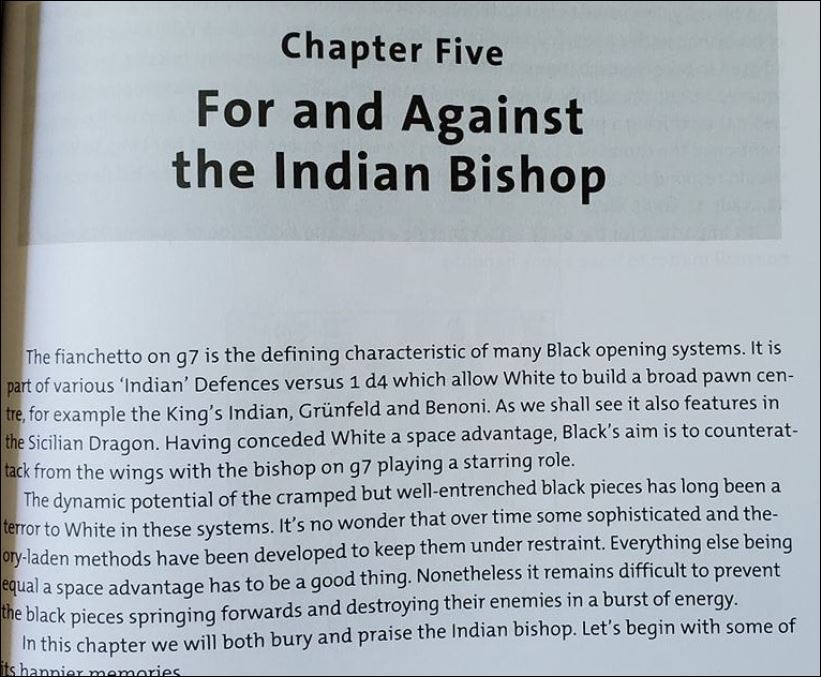
The chapter is made by 6 games deeply annotated, in each page there is a diagram with the author asking the reader to answer some questions which are not related to find a tactical move, but to decide why or not going into a certain direction, or why one should avoid another direction.
This kind of training, just in this chapter we have more than 30 questions, is quite expensive if one should hire a GM. Instead we can do it in the comfort of our own homes at the pace we like.
Chapter Six: Wielding the small stick
Once more the introductory text to the chapter, to give an idea of the topics dealt in this important chapter:
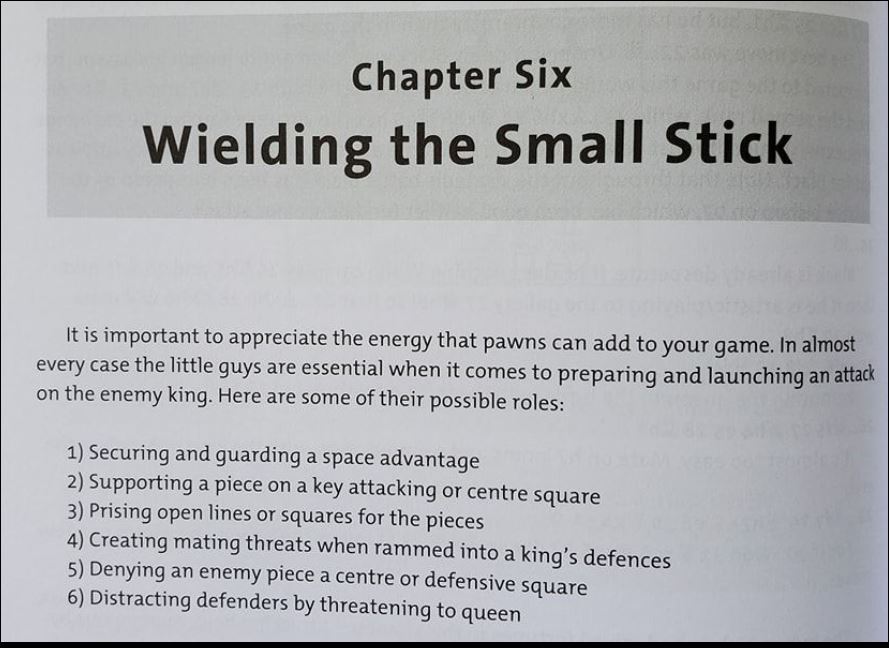
Seven games well annotated, and as in the chapter before a lot of questions to help the reader understand the subject the author is trying to get across, and eventually be able to apply it in one’s own games.
Chapter Seven: Preventing reinforcements rescuing the King
Introductory text:
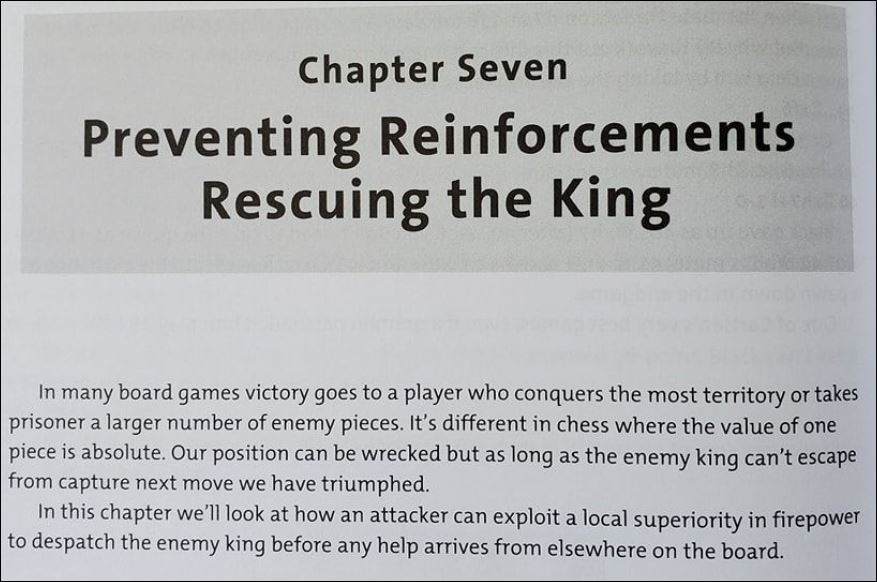
As for previous chapters multiple annotated games, with many questions, illustrate how to dispatch the enemy king from this earth, before his army comes back to the rescue.
Chapter 8: Getting in first with the rooks
This is maybe the chapter, with the one of the king in the centre, which gave me the most, maybe because I felt curious about it.
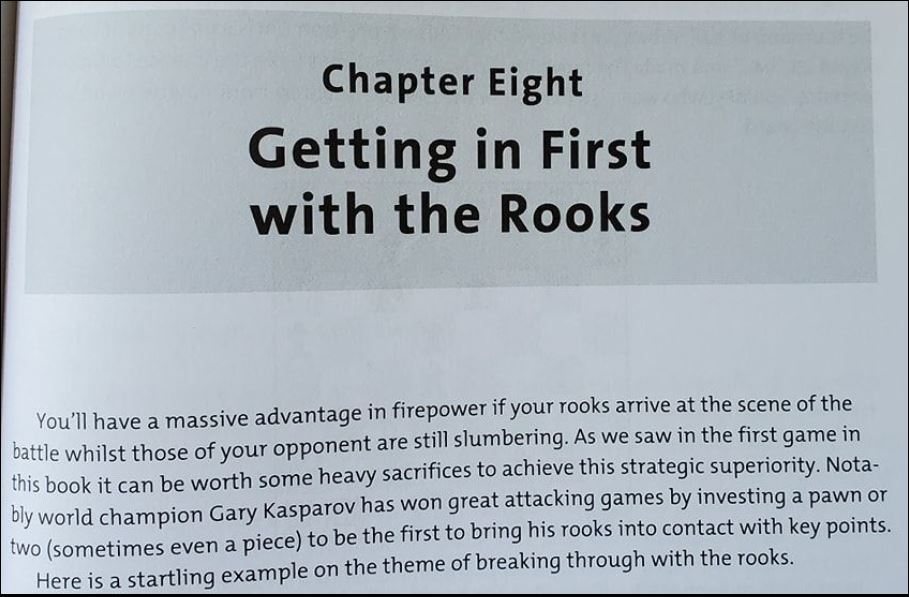
Many strong players become strong thanks to learning how to manage the rooks.
Since the author mentioned Kasparov, one should actively look at Kasparov’s games and see if he finds some in which Kasparov sacs and brings the rooks in to finish the job.
Before giving the games for this chapter, I’d like to show how important is visualization. GM McDonald at the end of the game between Shirov vs Alekseenko

Gives the following line: Black resigned in view of the forcing line: 29…g6 30.Rh8 Kg7 31.R1h7 Kf6 32.Rxf8 Rxf8 33.Rxd7 exf2 and now the part one needed to see 34.Ne4 and the game is over. The point here is that it’s normal to have one’s own visualization trained to see 4-5 moves in advance to justify some moves and sacrifices.
However after seeing these games, one could also think the opportunity lies if one has also a sharp opening repertoire. Or if the other player plays openings which give a space advantage. Often a space advantage creates opportunities.
Chapter Nine: From Ducking to Punching
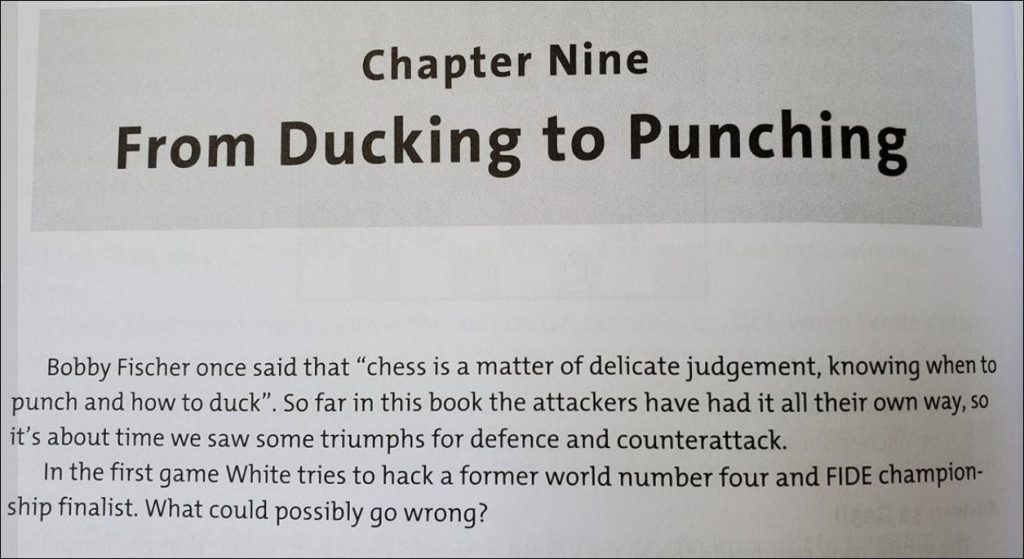
These are some of the games you’ll find within the book, please try to annotate them, then buy the book, and see the huge difference with the author’s annotation, and most of all the points in which he places a diagram, and ask some questions. I believe to annotate the games will help you to improve the understanding. By the way, Grandelius vs Adams it’s a Spanish Berlin Defense, but by move 9, and definitely by move 18 I felt it was a French exchange.
Pro and Con: The book’s diagram have the same size when they are part of a game, as when they are used for analysis of a line. I’ve seen other publishers use a smaller diagram when showing the analysis, it makes it clearer.
A pro is that diagrams are used often, and one can follow the book without a chess board.
A big problem I have with most chess publishers, is that they don’t care about chess players. What do I mean by this? Look at the following questions, they are great questions, showing our money spent on this book is worth it, because we are getting some training, but the diagrams are all oriented from White’s side, also if the question is clearly for Black!
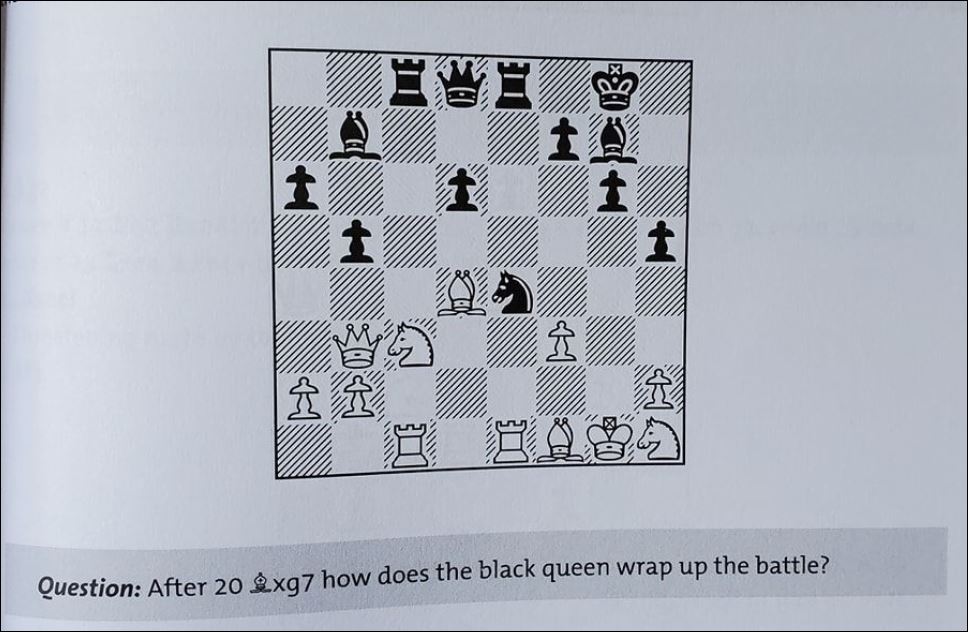
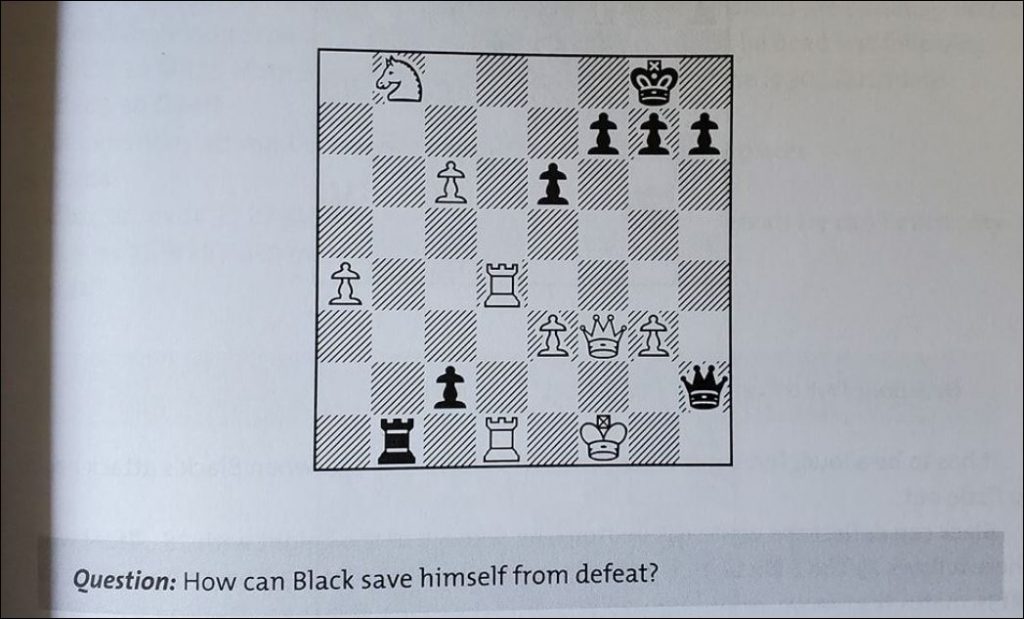

The book uses plenty of blitz and rapid games. In the past some players thought it was stupid, and a waste of time, to analyze or even study blitz games. Honestly I took down a collection of 7000 bullet/blitz games played by Magnus, against other 2700-2900 blitz players, played in Lichess. I honestly think what Magnus plays in 1 minute bullet is quite superior to whatever a 2000-2300 rated player can play in long time controls. It’s amazing how Magnus can instinctively find good move after good move with less than 1 second per move. It seems all modern young GMs, have been training extensively with engines, and they have gained a kind of engine like skills especially when playing blitz.
The strength of this book is the hundred of questions posed by GM McDonald, definitely important if one is serious in improving one’s own chess.
Final thoughts: I’m happy with this book, I think I’m getting the training I paid for, and I look forward to more chess books to enrich me and teach me as chess player.

Vivoy Owen
Alan Coulter